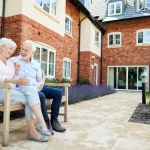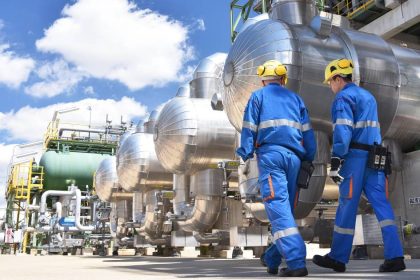As we enter what is predicted to be the hottest summer in a decade, Australian cities are faced with the pressing problem of managing future heatwaves.
Scientists have warned the mercury could hit record-breaking levels across Australia’s east in the coming months, impacting the functionality of our cities and the health of people living in them.
The message comes as the El Nino and Indian Ocean Dipole climate patterns coincide for the first time since 2015, with their combined effect driving hot and dry conditions across most parts of the country.
Last weekend, Sydney Airport recorded the hottest December day since records began in 1929, reaching 43.5C, with Melbourne and Brisbane spending much of the week with temperatures in the mid-30s.

With these sorts of extreme weather patterns here for the long haul, climate experts have called for a rethink among the nation’s construction and urban planning sectors on how to design and adapt our city’s infrastructure to deal with the increased heat.
Urban climatologist and built environment expert from UNSW Sydney, Dr Negin Nazarian, says heat-inducing factors exclusive to metropolitan areas can cause temperatures to be higher in cities than in rural environments.
“There’s urban heat itself, which is the change brought about by urbanisation, buildings, roads, infrastructure and the like. This is often referred to as urban heat island,” Dr Nazarian said.
“In the natural environment, trees, grass and soil provide shade, absorb heat and retain water. However, most materials which create the built environment absorb more heat, trap more radiation, and have no way of retaining moisture for cooling,” he explained.
However, Dr Nazarian says unlike other heat-generating factors, such as climate change and extreme weather, urban heat can be controlled locally by rethinking the design and materials used to construct our cities.
Construction strategies to keep cities cooler:
Cool materials
Materials used in building a city’s infrastructure or new developments can significantly impact the area’s temperature by reducing the urban heat island effect.
Using materials that radiate heat rather than absorb it, such as light-coloured paints or retroreflective pavement coatings, can help keep urbanised areas cooler.
“The more advanced ’super cool’ materials reflect most of the striking radiation backwards to the sky, reducing the heat trapped within the urban canopy, which means they won’t affect the thermal comfort of people in our street,” Dr Nazarian said.
Recent housing construction in Sydney has seen dark-coloured roofs continue to be popular, with many builders and property owners putting aesthetics and reduced costs ahead of choosing more heat-reflective materials.
“Revisiting the ban on black roofs and requiring the use of light-coloured roofing materials by councils would be one way to start to mitigate heat in these green-field developments,” he said.

Green Spaces
Cities can feel the immediate benefit of planting more trees through the additional shade they provide.
Their installation, particularly within parklands, can help provide a cooling microclimate and welcome relief.
City parks create a thermal oasis that can also deliver localised cooling, further reducing heat’s impact on residents.
“Trees have significant benefits such as providing shade, which reduces our exposure to heat and helps us endure hotter temperatures. They also have a positive impact on people’s wellbeing and air quality,” Dr Nazarin said.
“Green” roofs and facades are another excellent option for cities as the plants and foliage reflect rather than absorb heat.
However, they are more easily implemented in new buildings, where water-proofing and irrigation requirements can be incorporated into the design.

Urban planning
Urban design and planning decisions have a substantial impact on temperature management.
City planning that includes open spaces and positions buildings to facilitate natural ventilation can help dissipate heat.
Major capitals worldwide have designed their cities using wind corridors to facilitate cooling in hot summer months.
Blue infrastructure
Nearby water bodies like ponds, rivers, dams, and the ocean can be powerful tools for temperature reduction.
Like a natural air conditioner, water sources can cool the breeze as it travels towards the city, either over the sea or across ponds and parks.
Blue infrastructures have been strategically placed with greenery and wind corridors to help transport cooler air around cities.

Reduce manufactured heat
Humans can do more to reduce the heat they add to the city’s environment by switching to more sustainable choices throughout their day.
Dr Nazarian says one of the ways residents can do this is to rethink their use of air conditioning, car use, or other energy-consuming practices.
“While air-conditioning gives people relief from heat, it simultaneously releases condensation and heat out into the environment, creating more demand for cooling, releasing more heat into the environment in a vicious cycle,” he said.
Building designs are encouraged to feature more energy-conserving cooling methods, such as larger fans, better ventilation and higher ceilings where possible to reduce air conditioning use.







